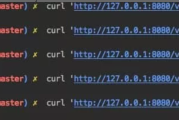刷题顺序按照代码随想录建议
题目描述
英文版描述
Assume you are an awesome parent and want to give your children some cookies. But, you should give each child at most one cookie.
Each child i has a greed factor g[i], which is the minimum size of a cookie that the child will be content with; and each cookie j has a size s[j]. If s[j] >= g[i], we can assign the cookie j to the child i, and the child i will be content. Your goal is to maximize the number of your content children and output the maximum number.
Example 1:
Input: g = [1,2,3], s = [1,1] Output: 1 Explanation: You have 3 children and 2 cookies. The greed factors of 3 children are 1, 2, 3. And even though you have 2 cookies, since their size is both 1, you could only make the child whose greed factor is 1 content. You need to output 1.
Example 2:
Input: g = [1,2], s = [1,2,3] Output: 2 Explanation: You have 2 children and 3 cookies. The greed factors of 2 children are 1, 2. You have 3 cookies and their sizes are big enough to gratify all of the children, You need to output 2.
Constraints:
1 <= g.length <= 3 * 10^40 <= s.length <= 3 * 10^41 <= g[i], s[j] <= 2^31 - 1
英文版地址
中文版描述
假设你是一位很棒的家长,想要给你的孩子们一些小饼干。但是,每个孩子最多只能给一块饼干。
对每个孩子 i,都有一个胃口值 g[i](,)这是能让孩子们满足胃口的饼干的最小尺寸;并且每块饼干 j,都有一个尺寸 s[j]( )。如果 s[j] >= g[i],我们可以将这个饼干 j 分配给孩子 i ,这个孩子会得到满足。你的目标是尽可能满足越多数量的孩子,并输出这个最大数值。
示例 1:
输入: g = [1,2,3], s = [1,1] 输出: 1 解释: 你有三个孩子和两块小饼干,3个孩子的胃口值分别是:1,2,3。 虽然你有两块小饼干,由于他们的尺寸都是1,你只能让胃口值是1的孩子满足。 所以你应该输出1。
示例 2:
输入: g = [1,2], s = [1,2,3] 输出: 2 解释: 你有两个孩子和三块小饼干,2个孩子的胃口值分别是1,2。 你拥有的饼干数量和尺寸都足以让所有孩子满足。 所以你应该输出2.
提示:
1 <= g.length <= 3 * 10^40 <= s.length <= 3 * 10^41 <= g[i], s[j] <= 2^31 - 1
中文版地址
解题方法
俺这版
java复制代码class Solution {
public int findContentChildren(int[] g, int[] s) {
if (g == null || s == null || g.length == 0 || s.length == 0) {
return 0;
}
Arrays.sort(g);
Arrays.sort(s);
int gLength = g.length - 1;
int count = 0;
for (int j = s.length - 1; j >= 0; j--) {
for (int i = gLength; i >= 0; i--) {
if (g[i] <= s[j]) {
count++;
gLength = gLength - (gLength - i) - 1;
break;
}
}
}
return count;
}
}
复杂度分析
- 时间复杂度:O(n^2),n为数组g和s长度的较大的值,后半部分嵌套了两次for循环,虽然实际不会每次都遍历全部的元素,因为gLength的长度一直在缩小,但理论上的时间复杂度应该还是O(n^2),而数组排序的时间复杂度是O(nlogn),因此整体的时间复杂度是O(n^2),n为数组g和s长度的较大的值
- 空间复杂度:O(nlogn),n为数组g和s长度的较大的值,整个方法主要占用额外内存的是一开始的两次数组排序,其余为O(1),因此整体的空间复杂度是O(nlogn),n为数组g和s长度的较大的值
官方版
java复制代码class Solution {
public int findContentChildren(int[] g, int[] s) {
Arrays.sort(g);
Arrays.sort(s);
int m = g.length, n = s.length;
int count = 0;
for (int i = 0, j = 0; i < m && j < n; i++, j++) {
while (j < n && g[i] > s[j]) {
j++;
}
if (j < n) {
count++;
}
}
return count;
}
}
复杂度分析
官方给出的>>
- 时间复杂度:O(mlogm+nlogn),其中 m 和 n 分别是数组 g 和 s 的长度,对两个数组排序的时间复杂度是 O(mlogm+nlogn),遍历数组的时间复杂度是 O(m+n),因此总时间复杂度是 O(mlogm+nlogn)
- 空间复杂度:O(logm+logn),其中 m 和 n 分别是数组 g 和 s 的长度,空间复杂度主要是排序的额外空间开销。




